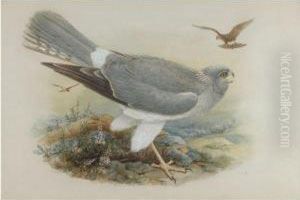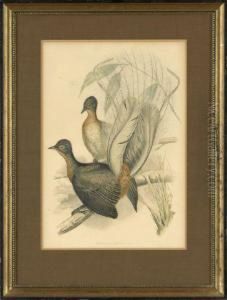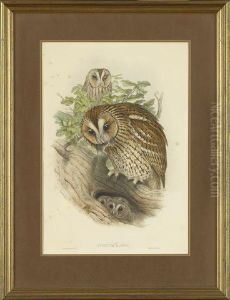Henry Constantine Richter Paintings
Henry Constantine Richter was a British artist, best known for his collaboration with the prominent English ornithologist John Gould. Richter was born in 1821 in London, England, and he developed a keen interest in art and natural history at a young age. His father was Henry James Richter, a painter and member of the Royal Academy, which undoubtedly influenced his early exposure to the arts.
Richter's skills were particularly suited to natural history illustration, a field that was gaining importance in the 19th century as scientists and explorers were eager to document the flora and fauna encountered in their travels and studies. Richter began working with John Gould in the 1830s, becoming a key contributor to Gould's monumental works on birds. Although largely self-taught, Richter's artistic talents and his ability to render the intricate details of birds with scientific accuracy quickly became apparent.
Throughout his career, Richter worked closely with Gould on a number of ornithological books, including 'The Birds of Europe,' 'The Birds of Asia,' 'The Birds of Great Britain,' and 'The Birds of Australia,' among others. Richter's illustrations were based on skins and specimens, and he was known for his ability to bring these to life in his artwork, capturing the vibrancy and dynamism of the birds in their natural habitats.
Despite his significant contributions, Richter often remained in Gould's shadow, with Gould receiving most of the credit for the published works due to the conventions of the time. Nonetheless, Richter's illustrations were essential to the success and accuracy of these publications, and they remain valued by ornithologists and art historians alike for their beauty and scientific value.
Richter continued to work with Gould until the latter's death in 1881. After Gould's death, Richter worked on completing some of the projects they had started together. Henry Constantine Richter passed away in 1902, leaving behind a legacy of detailed and accurate ornithological illustrations that continue to be appreciated in both the scientific and artistic communities. While his name may not be as widely recognized as that of John Gould, Richter's work played a significant role in the documentation and appreciation of the world's avian diversity during the Victorian era.


